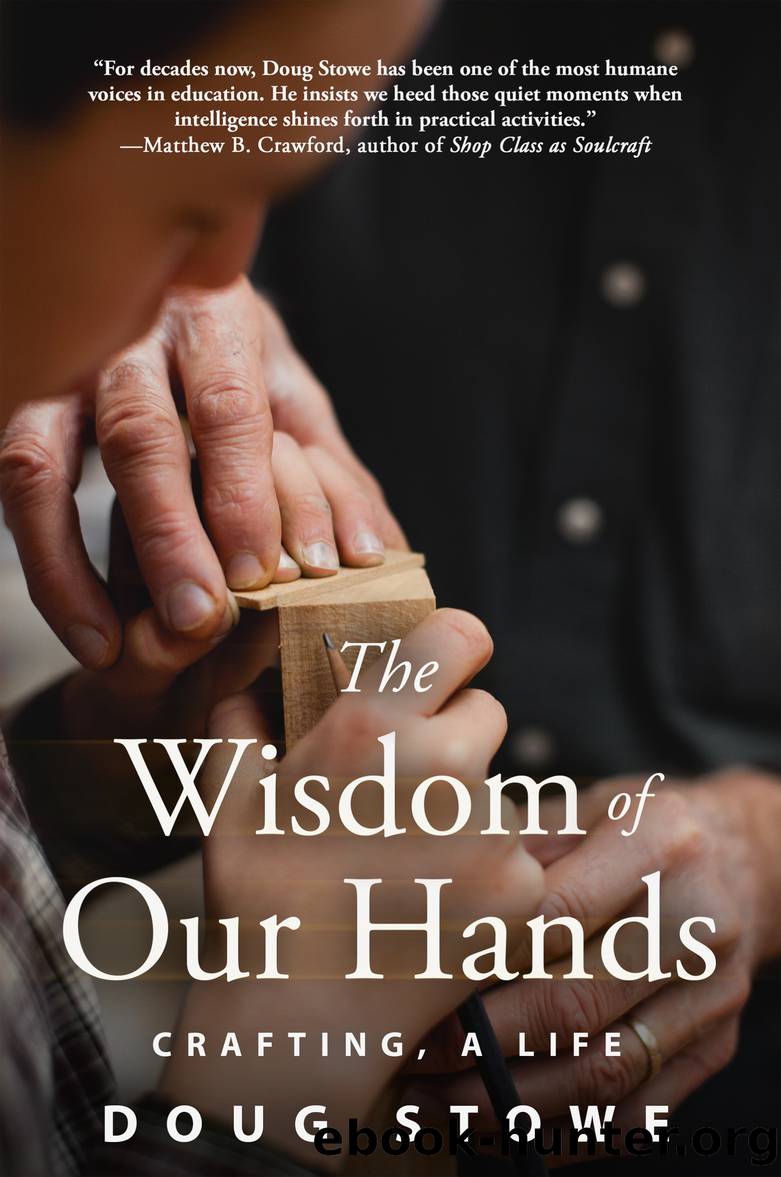The Wisdom of Our Hands by Doug Stowe

Author:Doug Stowe
Language: eng
Format: epub
Publisher: Linden Publishing
CHAPTER 7
CRAFTING, THE FAMILY
âThe ground of this business [education] is, that sensual objects be rightly presented to the senses for fear that they not be received ⦠This is the foundation of all the rest; because we can neither act nor speak wisely, unless we first rightly understand all the things which are to be done and whereof we have to speak.â
âJOHN AMOS COMENIUS33
Throughout the earlier times in human history and in every civilization, crafting was essential to survival. Children were taught by family members to make the essential things of life, and in doing so, culture was formed. In writing this book, Iâve tried not to be trite or trivial, and for that reason I have avoided clichés. But letâs use a couple for good measure. The first is that apples tend not to fall far from the tree. Iâm here now as I am because Iâve been delivered by trees of my own kind: a mother trained as a kindergarten teacher who loved the arts, and a father who loved making things and encouraging others to do the same. I bring them up not only as an explanation of who I am, but also because, as Iâll address later, engagement with family at all ages is an important contributor toward personal artistic growth. Family is a thread that runs through this chapter of the book.
Second cliché: no artisan is an island unto themself. I have learned the simple lesson that you, I, family, community, human culture, and the world of nature are seamlessly interconnected, and, being connected, we have important things to learn and share with each other. We function best in our craftsmanship when we are deeply connected with others. Family for most woodworkers may be the most important source of inspiration and empowerment. When I ask my adult students where they found their own interest in woodworking, most will point to a close family member or to a school woodshop.
A third point, not common enough to be trite, is a saying from the I Ching (Book of Changes), a Chinese book of philosophy and divination: âIf you want to know how something is going to turn out, look at its beginnings.â I find that history tells us important lessons, which is why Iâve found value in looking back at such things as kindergarten and the manual-training movement. Coming from the opposite direction is a saying from the study of geology: âThe present is the key to the past.â We can witness elements of our own past as we watch craft traditions long held sacred in families and communities within the developing world being lost to manufactured market materialism. That plays out today even in the industrialized world as we choose to shop rather than to make for ourselves, our families, and our communities.
Let me briefly review the changing history of community-based crafts. For countless generations, locally produced home crafts met the needs of people. These home crafts were produced in family settings with skills passed on from generation to generation.
Download
This site does not store any files on its server. We only index and link to content provided by other sites. Please contact the content providers to delete copyright contents if any and email us, we'll remove relevant links or contents immediately.
Audition by Ryu Murakami(4109)
The Body: A Guide for Occupants by Bill Bryson(3823)
Adulting by Kelly Williams Brown(3684)
Housekeeping by Marilynne Robinson(3424)
Zero Waste Home by Bea Johnson(3300)
Be in a Treehouse by Pete Nelson(3236)
Seriously... I'm Kidding by Ellen DeGeneres(3108)
Better Homes and Gardens New Cookbook by Better Homes & Gardens(2966)
Barkskins by Annie Proulx(2888)
The Healing Self by Deepak Chopra(2805)
Hedgerow by John Wright(2783)
The Life-Changing Magic Of Tidying Up- The Japanese Art Of Decluttering And Organizing (v5.0) by Marie Kondo(2753)
Spark Joy by Marie Kondo(2687)
The Genius of Japanese Carpentry by Azby Brown(2618)
The Cellar by Natasha Preston(2606)
Work Clean by Dan Charnas(2568)
120 Days of Sodom by Marquis de Sade(2448)
The Book of Numbers by Peter Bentley(2414)
A Monk's Guide to a Clean House and Mind by Shoukei Matsumoto(2412)
